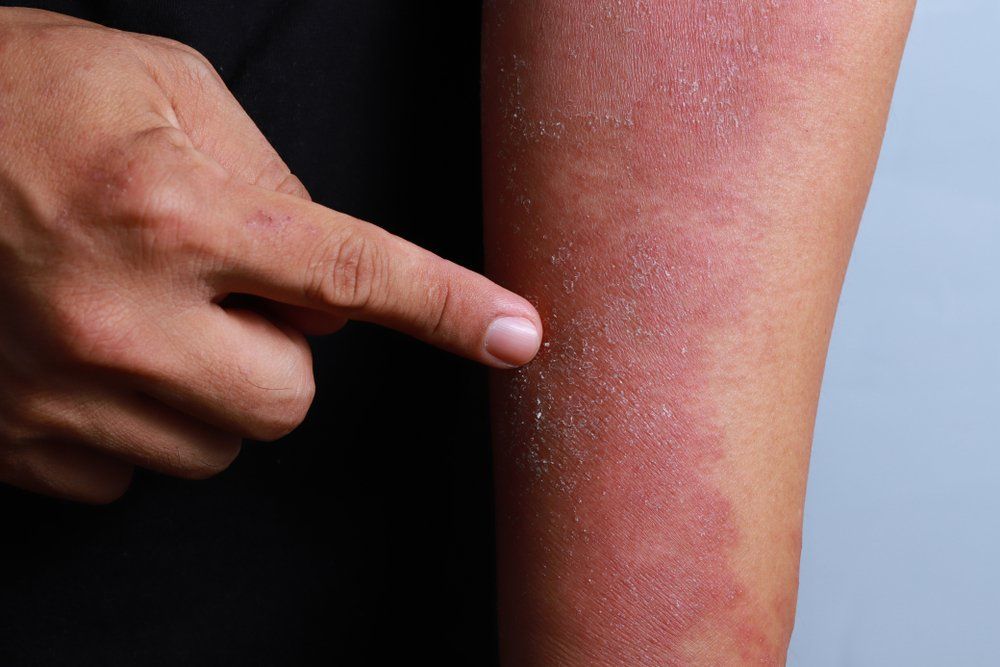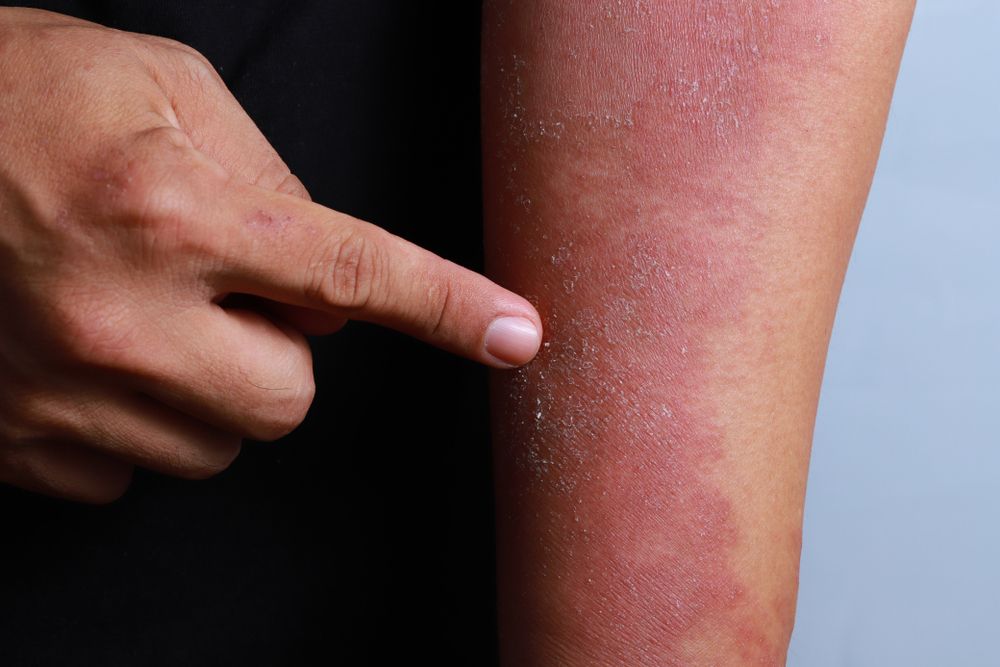- Acne
- Actinic Keratosis
- Aesthetics
- Alopecia
- Atopic Dermatitis
- Buy-and-Bill
- COVID-19
- Case-Based Roundtable
- Chronic Hand Eczema
- Chronic Spontaneous Urticaria
- Drug Watch
- Eczema
- General Dermatology
- Hidradenitis Suppurativa
- Melasma
- NP and PA
- Pediatric Dermatology
- Pigmentary Disorders
- Practice Management
- Precision Medicine and Biologics
- Prurigo Nodularis
- Psoriasis
- Psoriatic Arthritis
- Rare Disease
- Rosacea
- Skin Cancer
- Vitiligo
- Wound Care
Article
Less itch and more sleep with baricitinib
Author(s):
A phase two study of adults with moderate-to-severe atopic dermatitis shows that once-daily oral Janus kinase (JAK) 1 and 2 inhibitor baricitinib relieved itch and improved sleep, a study shows.
In a phase 2 study of adults with moderate-to-severe atopic dermatitis, once-daily oral Janus kinase (JAK) 1 and 2 inhibitor baricitinib relieved itch and improved sleep, according to new data presented at the February American Academy of Dermatology (AAD) annual meeting in San Diego.
That’s in addition to data presented last year suggesting baricitinib use resulted in a higher reduction in overall disease severity than treatment with a mid-potency topical corticosteroid alone.
Baricitinib represents a relatively new mechanism for atopic dermatitis treatment-one which is aimed at inhibiting inflammatory pathways, according to Jonathan Silverberg, M.D., Ph.D., M.P.H., who presented at AAD on the topic.
“Signaling of the inflammatory cytokines interleukin 4, 13, 31 and others are mediated via the JAK1 and 2/signal transducers and activators of transcription (STAT) pathway. Multiple inflammatory pathways that have been implicated in atopic dermatitis have been shown to signal through different versions of the JAK/STAT pathway,” says Dr. Silverberg, director of the Northwestern Medicine Eczema Center and Contact Dermatitis Clinic, Northwestern Memorial Hospital, Chicago. “So, mechanistically, JAK/STAT pathways look to be part of the signaling pathways that are responsible for many of the different pathophysiologic aspects of atopic dermatitis. In dermatology, we have some familiarity with JAK/STAT inhibitors from tofacitinib in psoriasis and psoriatic arthritis. Beyond that, this is something that is still thought of as new and fresh in the eyes of dermatologists.”
It appears, he says, that JAK inhibitors may have an added perk of both directly treating inflammation, as well as itch.
“Much of the itch in atopic dermatitis may actually be mediated through IL-31 signaling via the JAK1/2 pathway,” Dr. Silverberg says. “Since JAK1 and 2 are common pathways for multiple inflammatory mechanisms in AD, baricitinib’s efficacy may be broader, and able treat atopic dermatitis as well as overlapping skin conditions, like contact dermatitis and seborrheic dermatitis.”
Dr. Silverberg presented data from a phase 2 study of baricitinib in combination with topical corticosteroid treatment, versus topical corticosteroids alone. He was among the investigators of the drug’s phase 2 research.
Top-end results on efficacy, in terms of objective outcomes, were presented last year at the European Academy of Dermatology and Venereology (EADV) Annual Meeting in Geneva, Switzerland. In their analysis at AAD, Dr. Silverberg and colleagues presented patient-reported outcomes, including understanding the drug’s impact on itch and sleep.
“The bottom line is that baricitinib is quite effective for itch and, secondarily, improves sleep in atopic dermatitis,” Dr. Silverberg says. “We saw improvements in the Patient-Oriented Eczema Measure (POEM), which is the preferred measure for patient-reported outcomes for symptoms of atopic dermatitis by the Harmonizing Outcome Measures in Eczema international consensus group. There were not just significant improvements overall, but … patients had significant improvement in the frequency-the number of days in the past week-in which they experienced itch and significant improvement in the number of days in the past week that patients experienced sleep disturbances.”
The results were particularly strong in the subset of patients with the most severe atopic dermatitis, according to Dr. Silverberg.
“There were also reductions in the intensity of itch,” he says. “And one of the intriguing data points from the study was that the improvement in symptoms happened quite rapidly. By week one, there were already significant improvements in itch in the group taking the drug.”
Of the two doses-2 mg and 4 mg daily--that were tested in the phase 2 study, it appears that the 4 mg dosage results in a more robust effect on the symptoms, in terms of itch and sleep early on, according to Dr. Silverberg.
Questions remain how baricitinib will fare without topical corticosteroids and about the drug’s long-term safety.
Dr. Silverberg, a consultant for baricitinib maker Eli Lilly and Company, is a national principal investigator for one of the phase 3 studies, which is launching in the U.S.
“I think that the JAK inhibitors will be a major addition to our armamentarium of treatments for atopic dermatitis,” he says. “We don’t want to overstate anything yet. But, so far, phase 2 data looks quite good. We’re moving into phase 3 and, if the data hold up, I think we’re going to have a valuable addition to our toolbox.”
DISCLOSURES
Dr. Silverberg is a consultant, advisor and/or investigator for AbbVie, Kiniksa Pharmaceuticals, Galderma Research & Development, GlaxoSmithKline, Intraderm, Menlo Therapeutics, Pfizer, Regeneron-Sanofi, Realm-1, and Eli Lilly and Company. He is a consultant with Realm-1, Glenmark Generics. He is a speaker for Regeneron-Sanofi.
REFERENCES
“F061-Late-Breaking Research: Clinical Trials,” American Academy of Dermatology 2018 annual meeting. Sharon Baum, Robert, Bissonnette, Andrew Blauvelt, et al, et al. 1 to 3 p.m., Saturday, February 17.
Newsletter
Like what you’re reading? Subscribe to Dermatology Times for weekly updates on therapies, innovations, and real-world practice tips.






